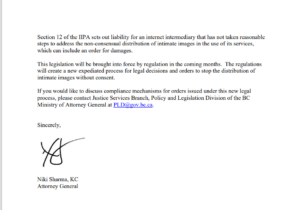Should an insurance company be judge, jury and executioner for who is at fault for a crash? This is the system British Columbians basically now have.
First a quick history lesson.
It used to be that if you had a crash in BC ICBC would decide who was at fault. Their decision, however, had no binding effect because motorists had rights. They could bring a claim against each other. Whatever the Court ruled in terms of fault would be binding. This would override any internal ICBC decision. A fair and objective system.
This right, however, has now disappeared along with almost all other rights crash victims had as part of ICBC’s move to no-fault insurance.
Despite BC having a ‘no fault’ system fault still matters greatly. A wrongful assessment of fault can cost a driver over $8,000. Despite these steep financial consequences ICBC has basically rigged the system that their decision rules with limited exceptions.
Instead of having a two year limitation period to sue another motorist the new system gives you far less time. Under the Accident Claims Regulation this is cut down to 90 days after “a detailed assessment of responsibility” is made by ICBC.
From there, if you exercise your rights, the system has its thumbs on the scales. Instead of a clean fresh assessment on a balance of probabilities, you have to prove ICBC got it wrong. Basically its a judicial review instead of a fresh hearing. And here ICBC has rigged the law in their favour with you needing to prove that ICBC acted “improperly or unreasonably” in their decision. So you don’t just prove the other party is probably at fault, you have to prove ICBC did a terrible job in reaching their internal assessment.
This is all set out in section 10 of BC’s Accident Claims Regulation which now gives British Columbia crash victims the following burden of proof in fighting the monopoly corporation:
Matters required to be proven and onus of proof
10 In a claim concerning a determination by the Insurance Company of British Columbia of the extent to which the initiating party is responsible for an accident, the initiating party has the onus of proving both of the following matters:
(a)the Insurance Corporation of British Columbia acted improperly or unreasonably in assigning responsibility for the accident to the initiating party;
(b)the extent to which the initiating party is responsible for the accident is less than the extent of responsibility assigned by the Insurance Corporation of British Columbia.
To summarize, the average BC motorist must
- buy your insurance from ICBC. There is no market choice.
- If you are the victim of a crash you cannot sue the at fault motorist (except in the most limited of circumstances)
- ICBC will decide if you are at fault or not
- If they are wrong it can cost you thousands
- If they are wrong you have very little time to challenge their decision and the challenge will not be a fresh decision but rather a review where you must prove that the insurer acted “improperly or unreasonably”.

